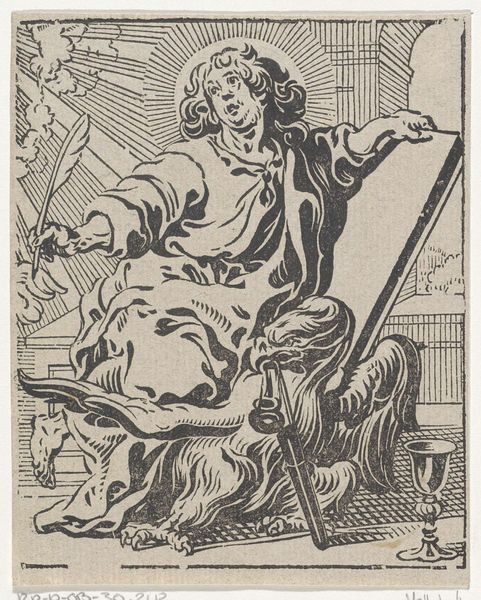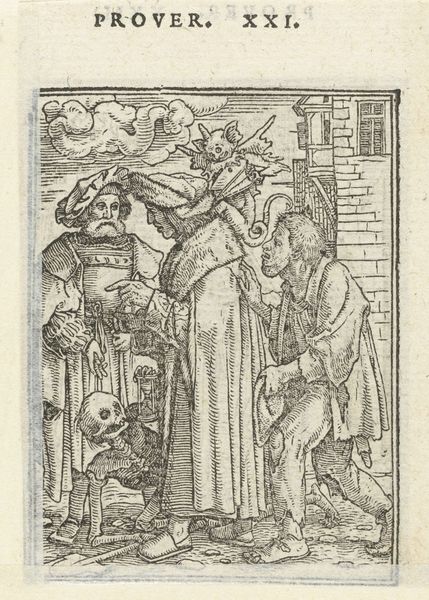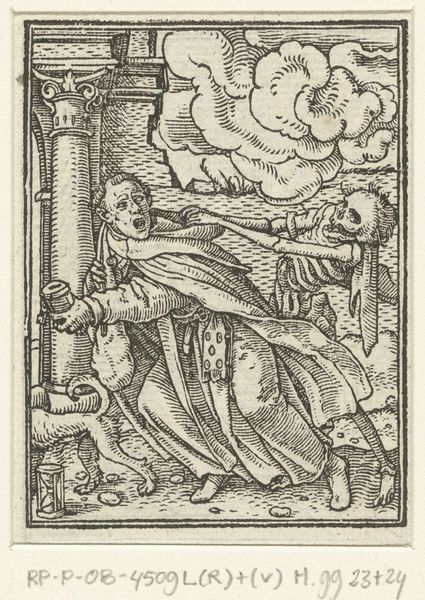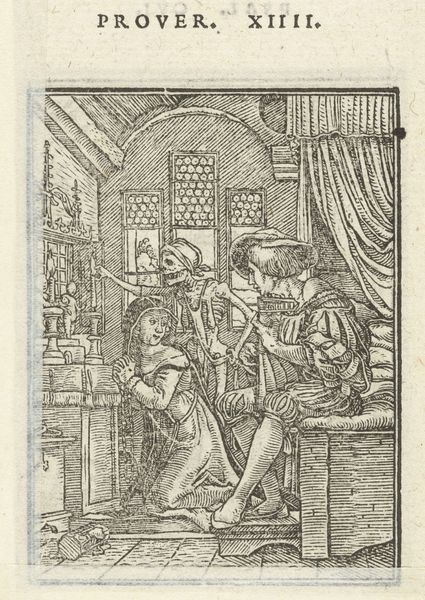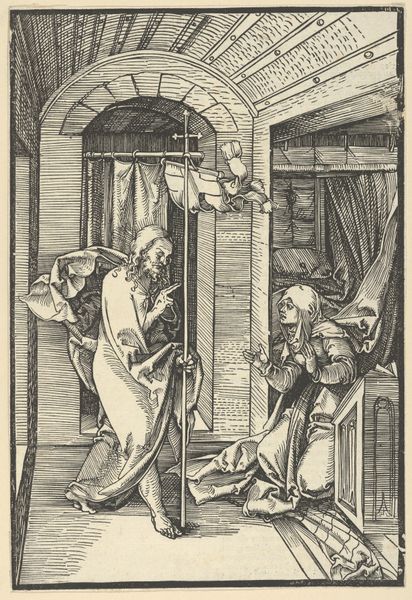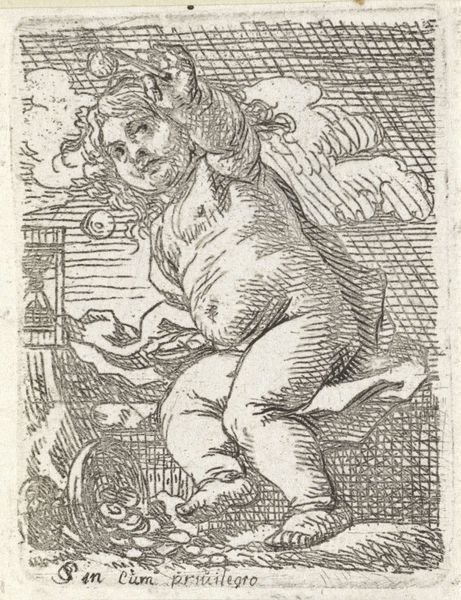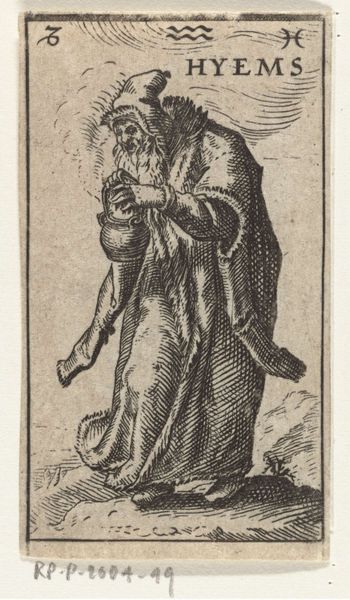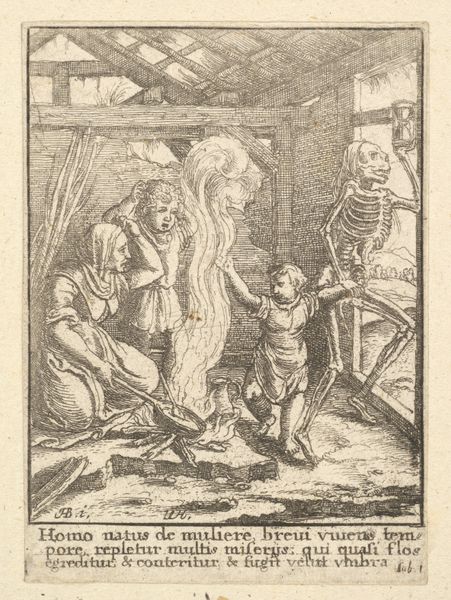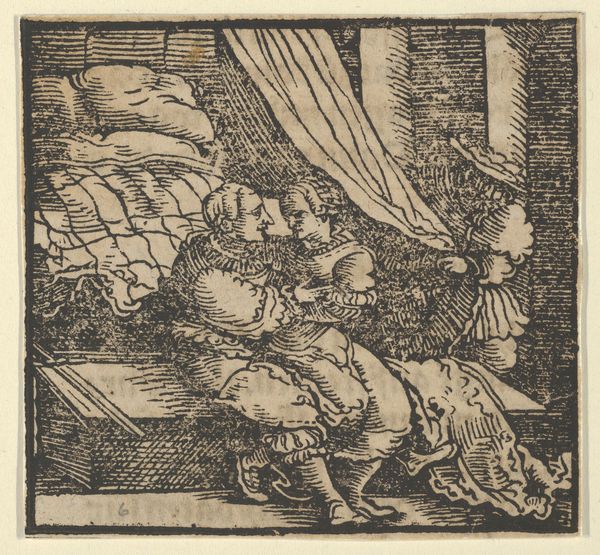
drawing, print, woodcut, engraving
#
drawing
#
narrative-art
#
pen drawing
# print
#
pen illustration
#
pen sketch
#
figuration
#
ink line art
#
woodcut
#
line
#
northern-renaissance
#
engraving
Dimensions: height 63 mm, width 41 mm
Copyright: Rijks Museum: Open Domain
Editor: Here we have Albrecht Dürer’s "Avondgebed", made in 1503, a woodcut currently held at the Rijksmuseum. It depicts a man kneeling in prayer beside a bed. The stark black and white gives it such a solemn, intimate feel. What do you see in this piece? Curator: I see the enduring power of ritual. Consider the imagery: the kneeling figure, the bedside setting, the flickering candlelight. Each element carries a heavy symbolic weight, accumulated over centuries of visual representation. Doesn't the very act of prayer, visualized, connect us to a deep, shared cultural memory? Editor: I hadn't thought about it that way. I was more focused on the individual's piety, a quiet moment. Curator: Precisely! It is both – the individual *and* the collective. Notice how Dürer renders the folds of the curtain, almost obscuring the sleeping figure. What emotional register does that obscurity strike for you? Does it create a barrier, or enhance intimacy? Editor: It feels protective, I think. Like sheltering the sleeper, but maybe also a separation. A private moment not just for the praying man but also for the sleeping person, tucked safely away. Curator: Good. So even in this ostensibly simple image, we find layers of meaning, reflections of personal faith interwoven with larger cultural narratives about sleep, prayer, and protection. Don't you agree that images can do this, echoing across time and culture, carrying a cumulative emotional power? Editor: Absolutely! It’s fascinating how a single image can be a vessel for so much cultural significance. It makes me think about what our images today will communicate in the future. Curator: Indeed. We, too, are creating the symbolic language of tomorrow.
Comments
No comments
Be the first to comment and join the conversation on the ultimate creative platform.
